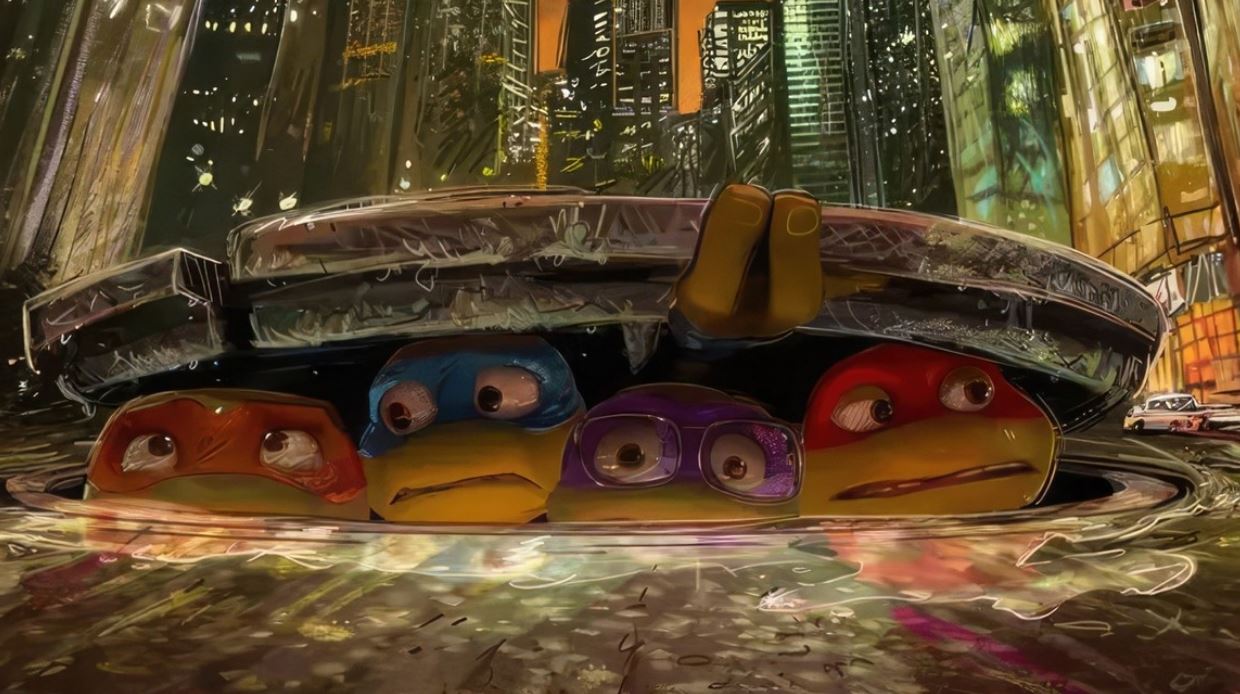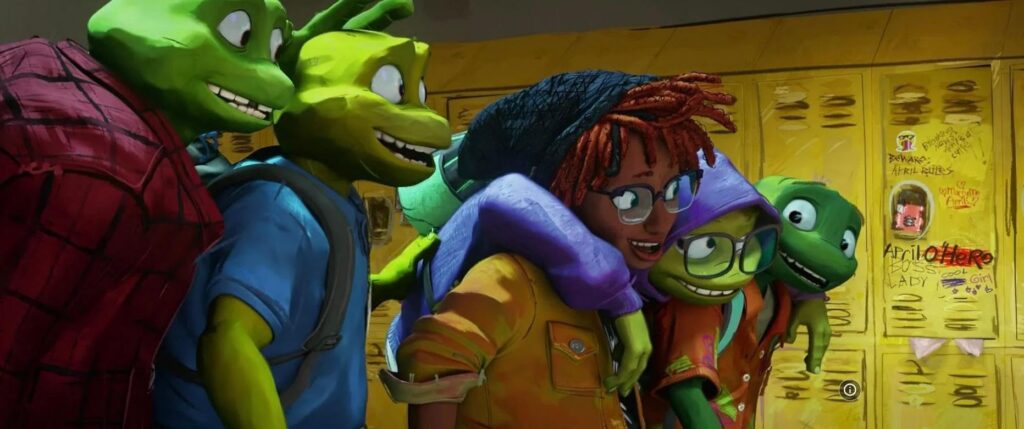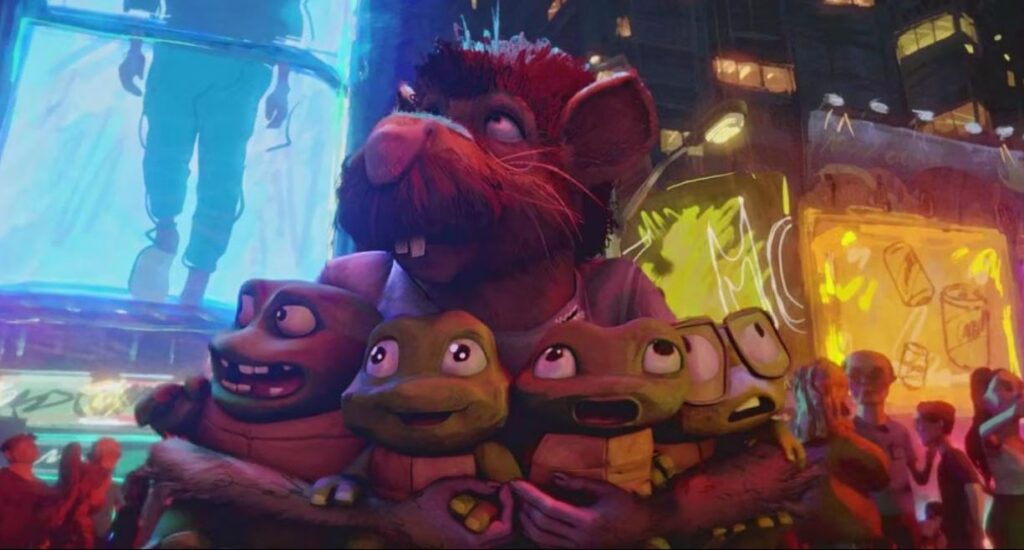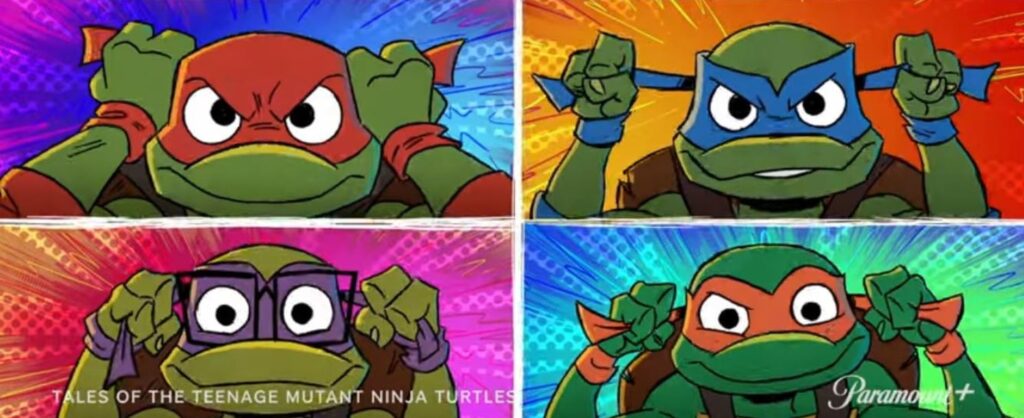Shredding Stereotypes: How the Ninja Turtles Reshaped Themselves for a New Era

Issue Three: The Next Mutation
Edited by Francisco Viana
2024 marks the 40th anniversary of the Teenage Mutant Ninja Turtles franchise. Kevin Eastman and Peter Laird published their first issue of “TMNT” in 1984 with no expectations that the series would go anywhere. Today, they are lauded as some of the greatest independent comic publishers in the business with a handful of iconic movie adaptations to show for.
By the turn of the 21st century, the turtles had become ubiquitous in the print, television, and film industries. Each new iteration of these characters reflected the current generation of teenagers in new and inventive ways. With the most recent interpretations, an emphasis on representing a wider faction of the audience took center stage.
“The diversity of the characters definitely correlates with the diversity of the user base,” says Bill Cody, a comic book retailer based in Illinois. “Comics used to be a white-male dominated hobby, period. I’ve definitely seen over the last few years an increase in diversity in the client base of people buying the turtles’ comics and toys.” Racial and ethnic diversity as well as the inclusion of LGBTQ+ characters became a greater focus in more recent turtles comics, with that focus being implemented into storylines in both direct and indirect ways.

Music choices and character redesigns are one thing, but comic publisher Boom! Studios took it a step further by depicting the turtles themselves as Black teenagers in a Power Rangers crossover. Fans have speculated for decades over whether the turtles would be Black given their use of slang, style of dress, and Raphael’s thick Bronx accent. However, the franchise has only recently begun canonizing specific cultural backgrounds for different characters.
Even if some fans are only willing to only acknowledge the turtles as being of a mutant race, it is undeniable that mutant stories in comic books have historically served as allegories for marginalized communities. For example, Jack Kirby and Stan Lee’s X-Men comics are famous for their metaphors likening the experiences of mutants to Jewish, LGBTQ+, Black, and disabled Americans. While not exactly a perfect comparison, the X-Men played a huge role in popularizing superhero comics following women and people of color.
While the franchise has always found success, particularly among younger audiences, “Teenage “Mutant Ninja Turtles: Mutant Mayhem” revitalizes a familiar favorite for the current generation in a way that is uniquely 2023. It serves as the perfect time capsule in an era where popular culture is redefined by the minute. “Mutant Mayhem” took the turtles a step further in embracing diversity by composing a team full of actors, producers, editors, artists, and musicians from all walks of life. The film still pays homage to its 1990 predecessor, drawing many elements from previous turtle properties while still managing to look and feel like the freshest interpretation that has been made in a long time.
“The filmmakers behind ‘Mutant Mayhem’ grew up on ‘90s hip hop, and given the choice between that and new pop music for the soundtrack, they pushed for the ‘90s music,” says Andrew Farago, curator of the Museum of Cartoon Art and author of “Teenage Mutant Ninja Turtles: The Ultimate Visual History.” “That decision, along with the most diverse voice cast we’ve had for any TMNT cartoon so far, should go a long way toward making sure that every new fan feels seen.”
What differentiates “Mutant Mayhem” from the rest of the franchise is its skillful depiction of the turtles as teenagers from the time period in which they were written. Seth Rogen and Jeff Rowe, who wrote and produced the film, have stated in various interviews that they wanted to emphasize the “teenage” part of Teenage Mutant Ninja Turtles.
To achieve this goal, the turtles’ voice actors, all of whom were still teenagers, were given the freedom to improvise. A good chunk of the dialogue that ended up in the movie was never part of the original script. It would be impossible for anyone else outside of Generation Z to encapsulate the spirit of a modern teenager as effectively as the main cast did.
“Mutant Mayhem’s” sense of humor shines through because of how current and in tune its references are with social media culture. The turtles feel awkward, gaudy and just as goofy as any kid watching at home would be. Their updated designs also allow for more personality to show through, giving each character individual shades of green skin and oblong head shapes to boot.

“The main ingredient for making them look like real teenagers was to play with their proportions and poses,” says Maxime Mary, a character designer from Nickelodeon Animation for “Mutant Mayhem.” “They had to always be a bit off, standing weirdly, with the head a bit too big and the legs being a bit too thin, with a big heavy shell.”
The distinct animation style made “Mutant Mayhem” a standout release in the midst of an industry-wide shift away from the “Pixar Look.” Pixar Animation Studios quickly became the standard of the animation industry as Disney experimented with combining traditional animation and three-dimensional CGI, computer-generated imagery. This resulted in the vast majority of 3D animated releases to mimic Disney’s smooth and shiny photorealistic style.
Recent animated films such as “Spider-Man: Into the Spider-Verse,” “The Mitchells vs. the Machines” and “Puss in Boots: The Last Wish” have strayed from this standard to play with more stylized, abstract 3D styles. “Mutant Mayhem” took a similar approach, developing a messier sketchy style that abandons realism and aims to capture the vibe of the film’s concept art. The artists wanted the film to feel like it had been ripped from the pages of a teenager’s notebook.

“Half of the artists came from ‘Mitchells’ and ‘Spider-Verse,’ so they took a lot of lessons from those other movies,” says Gabe Lin, “Mutant Mayhem’s” Head of Story. “[Mutant Mayhem] is different in its own way, but I can understand the comparisons. We used a lot of other live action movies as reference, specifically trying to avoid any kind of similarities with other ninja turtle properties.”
“Mutant Mayhem” stands apart from other interpretations of the turtles by taking a completely different approach to conflict than any other comic, movie, or series has. They originally wanted to focus on the Shredder but realized that the franchise had already beaten his character into the ground. Instead, Rogen and Rowe chose to bring back the Mighty Mutanimals, obscure Archie Comics characters, as the antagonists.
“At its core, TMNT is always going to be half-comedy and half-action,” Lin says. “But I think for the most part, the team cared more about the emotional heart of who the characters were and decided to have less name recognizable villains so the movie didn’t feel as tired.”
On “Mutant Mayhem’s” opening night, the movie theater crowd showcased just how varied ninja turtle fans have become. In the front row, there are little kids covered in popcorn butter, asking their parents over and over again when the movie is going to start. Teenage friend groups sit all the way in the back, sporting outfits based on the turtles’ colors to reflect their own personalities. Adults with no kids relish their peace as they get to relive the misadventures of a beloved childhood favorite.
And with a new spinoff series released this summer alongside a special anniversary one-shot from IDW publishing and a highly anticipated “Mutant Mayhem” sequel and video game in the works, it’s for certain that these grown-up turtles aren’t going anywhere.

“We’re getting to the point where kids and their grandparents can enjoy TMNT together,” Farago says. “And that’s a wonderful thing.”
